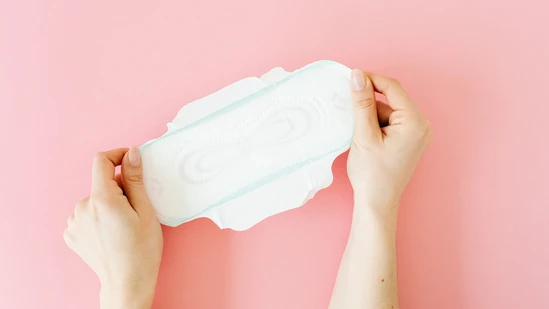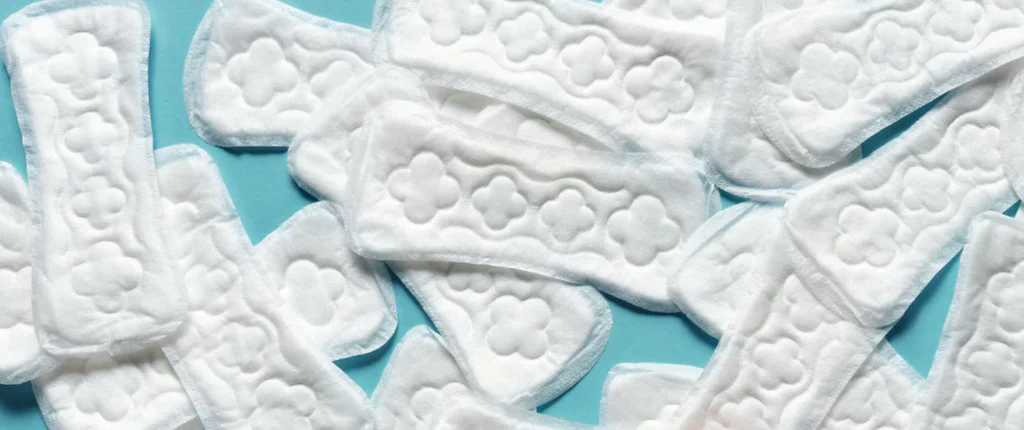Are you tired of constantly wondering when to change your pad during your period? Well, you’re not alone. It’s a common question that many women have. The good news is, that I’m here to help you navigate through this topic and provide you with some valuable insights.
Contents
When to Change Pads?

Knowing when to change your pads during your period is essential for maintaining hygiene and comfort. While there isn’t a one-size-fits-all answer, there are a few factors to consider. Let’s find out them:
1. Comfort Level
Your comfort level plays a crucial role in determining when to change your pad. Pay attention to how you feel while wearing it. If your pad feels wet, uncomfortable, or heavy, it’s time for a change. Trust your instincts and prioritize your comfort throughout your period.
2. Flow Heaviness
Another factor to consider is the heaviness of your flow. On average, most women lose between 7 and 10 teaspoons of blood during their menstrual cycle, which isn’t a lot. However, flow can vary from person to person. Some women have heavy flow, while others experience lighter flow. Understanding your flow pattern will help you gauge how often to change your pad.
If you have a heavy flow, you may need to change your pad more frequently to avoid leakage or discomfort. Regularly check your pad during your trips to the toilet to see how full it’s getting. If it’s filling up quickly, it’s time for a fresh pad.
3. Type of Pad
The type of pad you’re using can also impact how often you should change it. Different pads have varying absorbency levels, so choose one that suits your needs. If you’re using a thinner pad with less absorbency, you may need to change it more frequently. Conversely, if you’re using a highly absorbent pad, you may be able to go a bit longer between changes.
Signs that it’s Time to Change Your Menstrual Pad
1. Heavy Flow
If you have a heavy flow, you may need to change your menstrual pad more frequently. Pay attention to how quickly your pad becomes saturated and consider changing it every 3-4 hours or even more frequently if necessary.
2. Leakage
Leakage can be a clear indication that it’s time to change your menstrual pad. If you notice any leaks or stains on your underwear, it’s a sign that your pad is no longer providing the necessary protection. Don’t ignore these signs to avoid embarrassment and maintain cleanliness. Change your pad promptly to prevent any further leaks.
3. Feeling Wet or Uncomfortable
Feeling wet or uncomfortable is another signal that it’s time for a pad change. As your pad absorbs menstrual flow, it may start to feel damp against your skin. This can lead to discomfort and potential irritation. If your pad feels wet or uncomfortable, it’s a good idea to change it to keep yourself feeling dry and fresh.
4. Odor
While menstrual blood itself doesn’t have an inherent odor, leaving a pad on for too long can contribute to the build-up of bacteria and potential odor. To prevent any unpleasant smells, it’s recommended to change your pad regularly. Trust your sense of smell and if you notice any odor, it’s time for a pad change.
5. Irritation or Rash
Wearing a pad for an extended period of time can lead to chafing, rash, or irritation. This can be especially true if your pad becomes too saturated or if the materials are not suitable for your skin. If you start to experience any discomfort, itching, or redness, consider changing your pad to prevent further irritation.
How Often Should You Change Your Menstrual Pad?

The frequency with which you should change your menstrual pad depends on a few key factors, including your flow, activity level, and comfort. Heavy flows require more frequent changes, typically every 2-4 hours, while lighter flows allow for longer intervals of 4-6 hours. Spotting may only necessitate a pantyliner or thin pad. Activity levels also play a role, with more active individuals needing more frequent changes to avoid leaks.
Ultimately, comfort is key, so change your pad as soon as it feels full or uncomfortable. Wearing a pad for too long can lead to irritation and infection. Remember to check the instructions on the pad packaging for specific recommendations, as different brands and types have varying absorbencies.
Frequently Asked Questions
Should I change my pad every time I pee?
Yes, it is best to change your pad every time you pee. This helps maintain hygiene and prevents bacterial infections.
Is it OK to wear a pad for 12 hours?
No, it is not hygienic to wear a pad for 12 hours. Change your pad every 3-4 hours to prevent bacterial buildup and odor.
What if I have no pads and I’m on my period?
You can use folded toilet paper or paper towels as a temporary substitute for pads until you can get proper supplies.
I am a medical student with experience and interest in Women’s health and well-being.